Removing Flooring Mastics and Adhesives
An in-depth look at the removal of flooring adhesives.
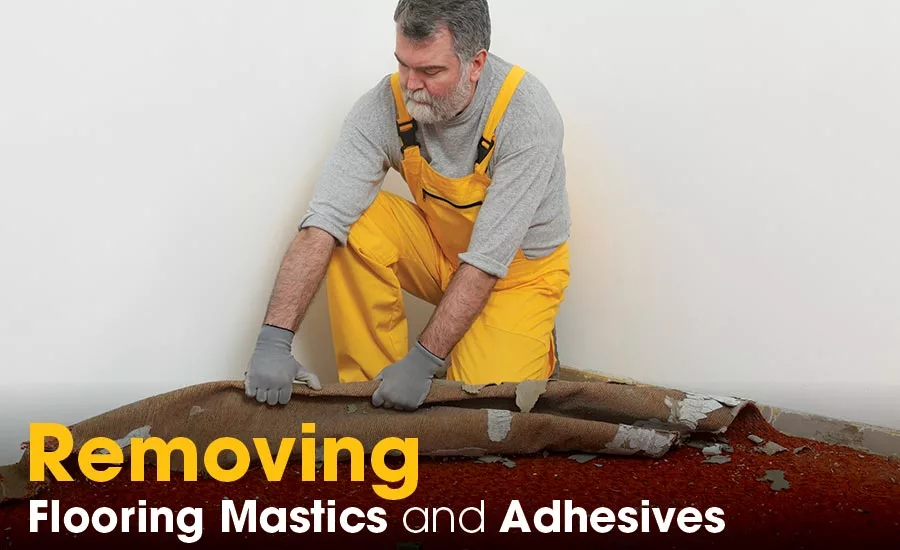
Thanks to Sir Isaac Newton and a story about an apple, we know that what goes up must come down. In the land of flooring adhesives, however contradictory to gravity, what goes down must come up. Many types of flooring are installed with adhesives and in most situations flooring adhesives should be removed following removal of the flooring.
Why Flooring Adhesives Should be Removed
Flooring adhesives should be removed for a variety of reasons. When installing flooring, it is important to have a clean subfloor surface. Failing to remove adhesives can cause problems with the installation of new glued down flooring as well as floating floors. Many new adhesives are not compatible with older adhesives and will not cure and adhere correctly to the subfloor or the new flooring.
When flooring has been compromised as the result of a flood, water damage or sewer backup it is important to fully remove not just the contaminated flooring but the adhesive as well. Residual contaminated adhesives could potentially be havens for odor, mold and mildew growth.
Many adhesives found in residential or commercial properties contain hazardous materials like asbestos, PCB’s, lead or mercury. Covering these products with new flooring could create problems in the future for residents or contractors who are unaware of the hazard lurking under their flooring. There are many regulations surrounding the removal of these materials and the appropriate agencies and professionals should be consulted before beginning this type of removal project.
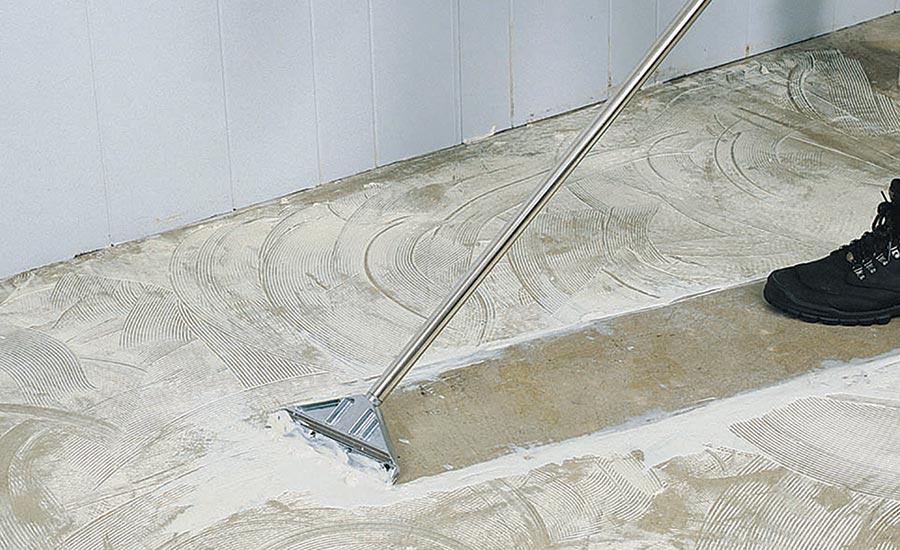
Chemical or Mechanical Removal
There are many factors to consider when choosing which removal process is appropriate for your application. It is necessary to consider preparation, process, equipment needs and safety precautions to ensure the successful completion of a project.
Chemical removal can be used in most situations. Mechanical removal requires specialized power equipment or hand tools and may not remove the adhesive completely. For extremely large jobs, mechanical may be the chosen path. For small jobs, or small rooms as part of large jobs, chemical removal might be the preferred choice. Chemical removal can be used regardless of job size and it may be required when hazards such as asbestos, mold and mildew are present.
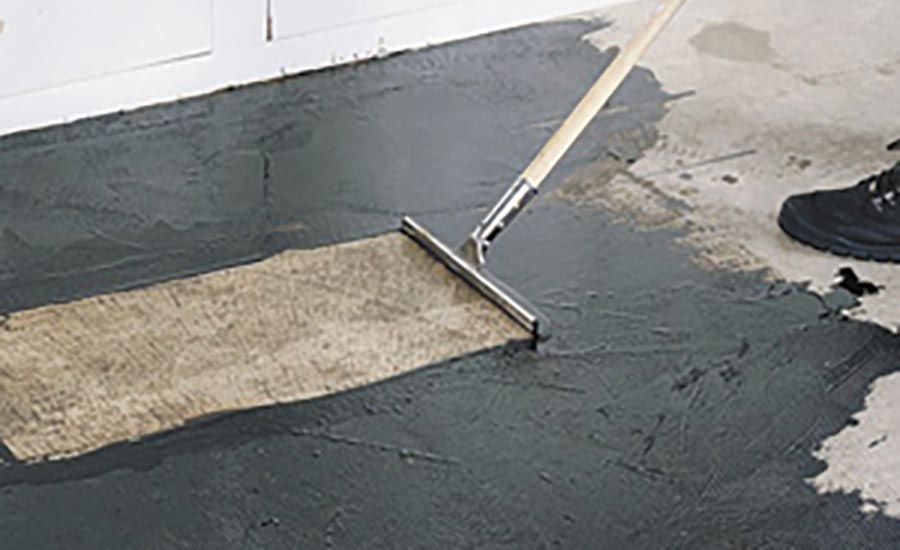
Flooring Categories and Adhesives
In the United States, millions of square feet of flooring are removed every year. The majority of that flooring falls into three categories: carpet, vinyl tile, and hardwood. These three types of flooring also use three types of adhesives, and therefore, there are as many types of flooring adhesive removers.
Adhesives are much like paints. There are oil-based adhesives, acrylic/latex-based adhesives and urethane adhesives. Generally speaking, oil-based adhesives are most often found under vinyl tiles, acrylic/latex adhesives are used to glue down carpets, and if not nailed down, hardwoods are glued with a urethane or solvent based adhesive.
Choosing the Right Chemical Product
There are many types of chemicals that will remove flooring adhesives. Careful consideration should be given to the characteristics of the product. Flammability, toxicity, local VOC regulations, odor and rinse-ability should all factor into a purchasing decision.
Oil-based adhesives (often referred to as mastic) used under vinyl tile will require a solvent based remover to fully remove the adhesive, while acrylic/latex-based adhesives found under glued down carpet can be removed with a waterborne adhesive remover. There are urethane specific removers designed for wood glues which are also solvent in nature.
Because solvent-based removers are refined from petroleum, they do have a flammability component as well as an odor to consider. Dependent on the base solvent, these removers vary both in flash point and odor thresholds, but are designed to wash and rinse away without odor lingering.
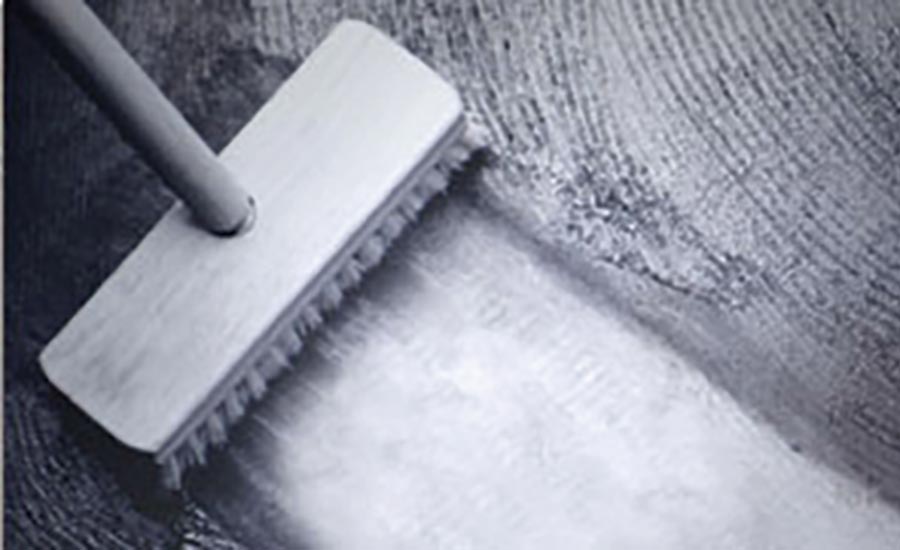
Procedure for Chemical Removal
The first and most important step when starting chemical removal is to guard areas that the chemical could potentially enter and not be easily removed. Areas to protect include walls, drains, built-in cabinets, cracks in the subfloor, appliances and adjoining flooring. The preferred method of protection is diking with absorbents. Other materials such as rags or plastic barriers can be used, but if plastic sheeting is taped down the remover could potentially affect the tape as well and leak under it.
It is prudent to turn off all pilot lights in the work area and adjoining spaces, especially when working with solvent or oil-based products. Additionally, make sure there is plenty of ventilation in the space with fresh air being cycled in.
Equipment needs for chemical removal are straightforward and can be found in any big box home improvement store. Stripper pads, floor scrapers or stiff bristle brushes are recommended to break down and agitate the adhesive, taking care not to fling residue onto walls. Squeegees and/or mops are recommended to control the liquefied adhesive. Absorbents are necessary to solidify liquefied adhesive waste for disposal. Once the adhesive is completely removed, washing and/or rinsing the floor to completely remove all residues from the adhesive and remover will be needed. Oil-based products generally need to be washed with a degreaser and then rinsed. Waterborne removers may only need to be rinsed thoroughly.
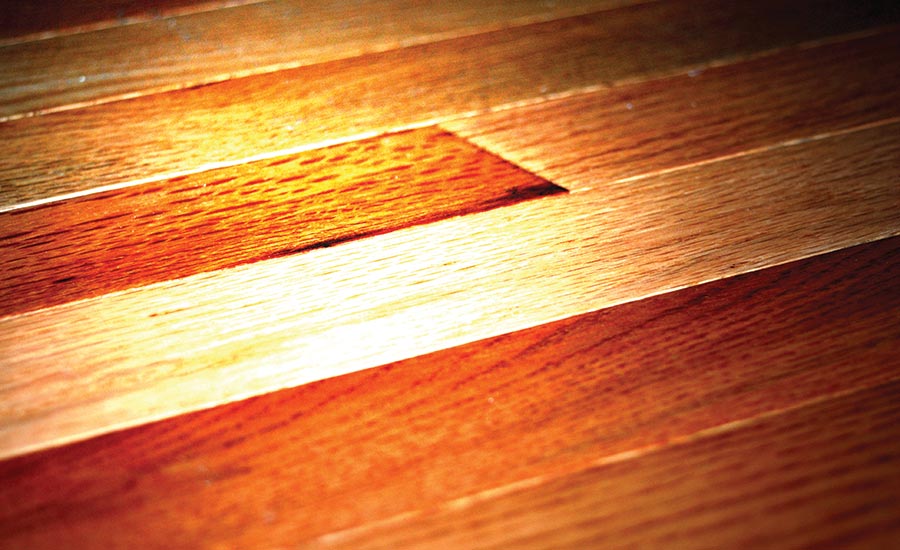
Ready for a New Floor
If installing new flooring in a space doesn’t fall to you, you can still be confident you are leaving a clean subfloor for the next step of the process. If you are following the removal with a new install, it is important to carefully check both the flooring and adhesive installation procedures. Often times manufacturers require testing of the subfloor moisture or pH, and acclimation of the flooring to the climate of the space.
These suggestions can help to efficiently and economically prepare your existing subfloor for new flooring or allow the subfloor to be a useable surface.
Looking for a reprint of this article?
From high-res PDFs to custom plaques, order your copy today!





